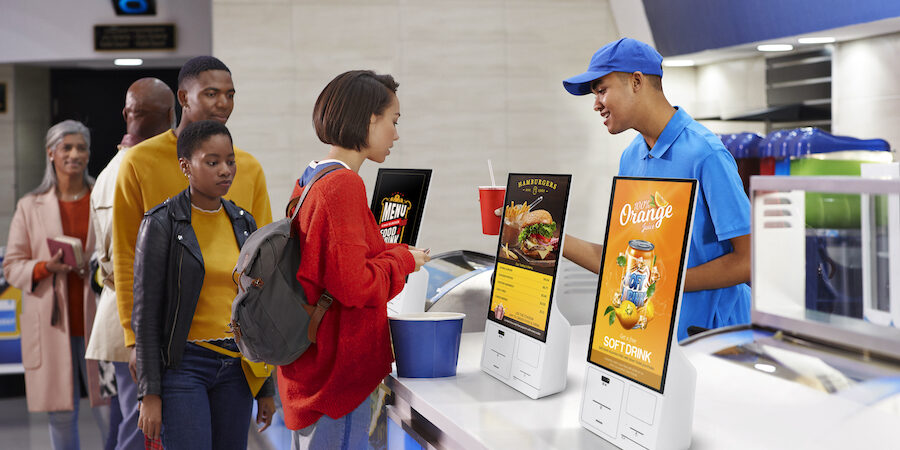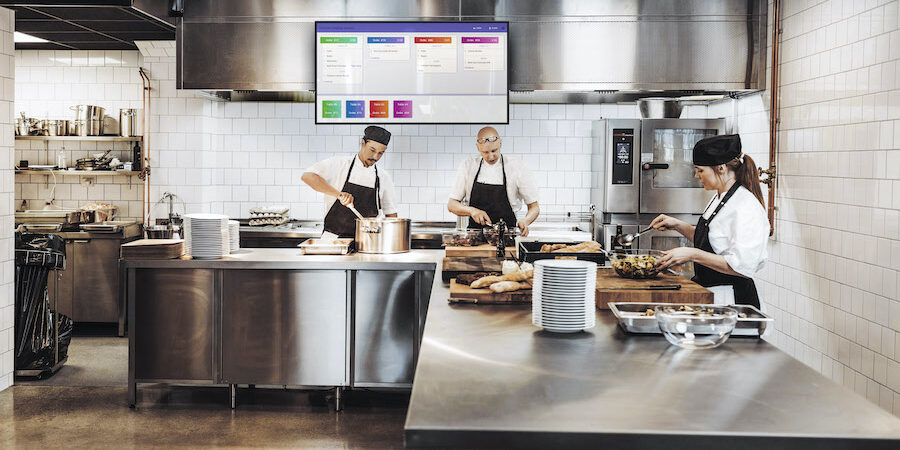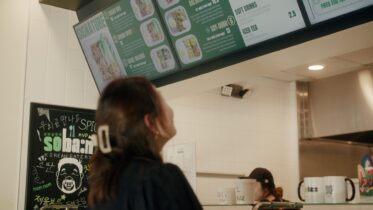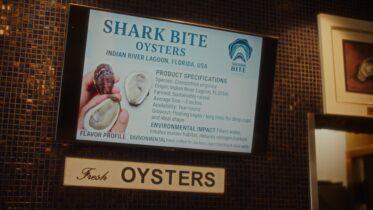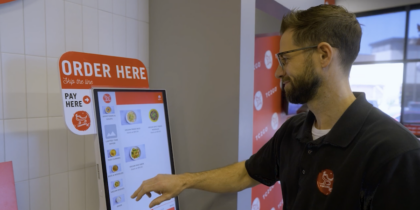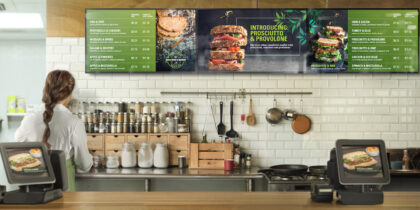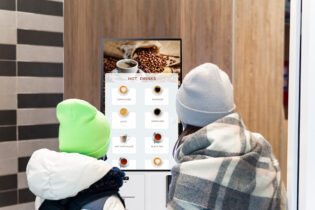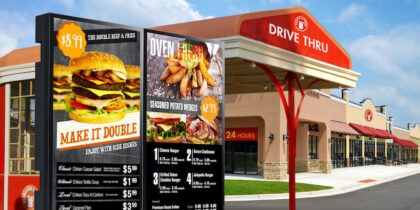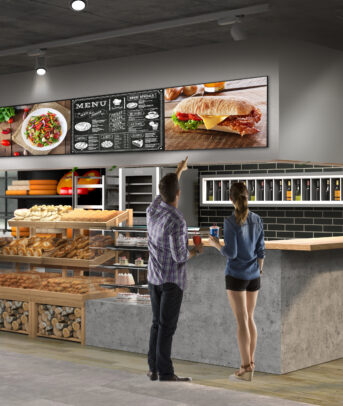As quick-serve restaurants (QSRs) and c-stores wrestle with rising food and labor prices, they are turning to technology like self-service kiosks and digital menu boards to help boost sales and cut costs. They also provide a powerful answer to the question of how to increase average “basket size” — the number of items a consumer buys in a single transaction.
Digital kiosks and touchscreens encourage more food orders with research showing that kiosks and digital signage boards prompt people to spend 20-30% more, on average. As well as building basket size, self-service kiosks can also be used to push premium and higher-margin food items, which further elevates the bottom line. Here’s how else kiosks increase basket size.
Kiosks enable the cross-sell
Self-serve kiosks enable QSRs and c-stores to cross-sell related items such as fries and a dipping sauce or soups and salads. Bundling complementary products together is another great way to increase a customer’s basket size, with shoppers shown to be attracted to bundles.
QSRs and c-stores can also use kiosks and digital menu boards to group main meals and breakfasts in a variety of ways to connect with individual customer preferences. For example, they might focus on the calorie count, bundling healthier items together to promote the cross-sell.
Upselling and promoting premium products
A key benefit of self-serve kiosks is the ability to upsell. QSRs and c-stores can use self-service kiosks to assist with upselling by suggesting add-ons or bigger sizes, such as kicking up a medium-sized drink to a large one. The same goes for pushing premium products such as signature dishes to generate higher sales. Kiosks can also be deployed to promote current and limited-time offers to inspire extra purchases.
Elevate your QSR by empowering employees
Explore how key technologies can help QSRs stay competitive and mitigate growing industry problems. Download Now
Crucially, kiosks encourage upselling with relevant product suggestions that are based on a customer’s real-time selections and orders. Unlike store employees, they will never tire of asking customers if they would like something else.
Leveraging loyalty on self-service kiosks
C-stores and QSRs can leverage their loyalty programs on self-service kiosks to encourage higher customer spend. Timely offers and messaging can encourage loyalty program members to spend extra to earn extra loyalty points or redeem them for a free cup of coffee, for example.
This also raises awareness of the loyalty program and therefore encourages more enrollment, whether free or paid. Businesses with paid loyalty programs may see more benefits — as McKinsey reports, members of paid programs are 60% more likely to spend more at a brand after subscribing than members of free programs, who are 30% more likely.
Self-service kiosks put customers in charge
Self-service kiosks, like the Samsung Windows All-In-One Kiosk, put customers in control of their orders for a more personalized experience. They can use the kiosk to browse menus and select items in their own time with no need for sales assistants. Order accuracy is also improved through kiosk ordering, which enhances the customer experience.
Other improvements kiosks provide to the customer experience include multiple payment options and, because it features an internal payment module, there’s no need for peripherals. Furthermore, an antimicrobial coating helps to inhibit bacteria growth from continuous use by people.
Tapping into growth
Samsung Kiosk provides a quality display with crisp and clear visuals that attract customer attention and create both upselling and cross-selling opportunities, not to mention raising the quality of customer service. Linked with QSR and c-store loyalty programs, Samsung Kiosk can further drive an increase in average basket size and customer spend.
Learn more about how Samsung Interactive Displays can direct customers into your c-store and drive sales. And get your free guide to digitizing convenience stores to boost sales using digital signage.
